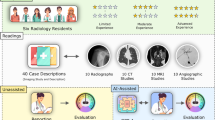Abstract
Virtual surgery and endoscopy use computer-generated volume renderings and/or models created from 3D medical image scans (CT or MRI) of individual patients. The patient’s anatomy, including organs and other internal structures of interest, are then traversed in a virtual “fly-through,” giving nearly the same visual impression as if the corresponding real organ was being examined intraoperatively, or as if an actual video or fiberoptic endoscopic procedure was being performed. Such virtual examinations may provide capabilities and information not possible or available in physical examinations. The potential is to provide a noninvasive computer-aided treatment plan or diagnostic screening procedure to augment or replace conventional invasive procedures. With sophisticated image processing and computational analysis, it is possible to perform realistic and useful simulations of surgical and endoscopic procedures, including “virtual dissection and resection” and “virtual biopsy.” Surgical margins can be accurately assessed and differential tissue diagnoses made based upon spectral or other information contained in the patient-specific images and models.
Similar content being viewed by others
References
Robb RA, Hanson DP: The ANALYZE software system for visualization and analysis in surgery simulation, in Lavallée S, Taylor R, Burdea G, et al (eds): Computer Integrated Surgery. Cambridge, MA, MIT Press, 1995, pp 175–190
Kohonen T: Self-organization and associative memory (ed 3). Berlin, Germany, Springer-Verlag, 1989
Fritzke B: Growing cell structures—A self organizing network for unsupervised and supervised learning. Neural Networks 7:1441–1140, 1994
Robb RA, Cameron BM: Virtual reality assisted surgery program, in Morgan K, Satava R, Sieburg HA, et al (eds): Interactive Technology and the New Paradigm for Healthcare, vol 18, Amsterdam, IOS Press, 1995, pp 30–320
Geiger B, Kikinis R: Simulation of endoscopy, AAAI Spring Symposium Series: Applications of Computer Vision in Medical Image Processing. Palo Alto, CA, Stanford University Press, 1994, pp 138–140
Rubin GD, Beaulieu CF, Argiro V, et al: Perspective volume rendering of CT and MR images: Applications for endoscopic imaging. Radiology 199:321–330, 1996
Satava RM, Robb RA: Virtual endoscopy: Application of 3-D visualization to medical diagnosis. PRESENCE 6: 179–197, 1997
National Library of Medicine (US) Board of Regents. Electronic imaging: Report of the board of regents. Wishful Research NIH Publication 90-2197. Washington, DC, US Department of Health and Human Services, Public Health Service, National Institutes of Health, 1990
Author information
Authors and Affiliations
Rights and permissions
About this article
Cite this article
Robb, R.A., Aharon, S. & Cameron, B.M. Patient-specific anatomic models from three dimensional medical image data for clinical applications in surgery and endoscopy. J Digit Imaging 10 (Suppl 1), 31–35 (1997). https://doi.org/10.1007/BF03168651
Issue Date:
DOI: https://doi.org/10.1007/BF03168651




